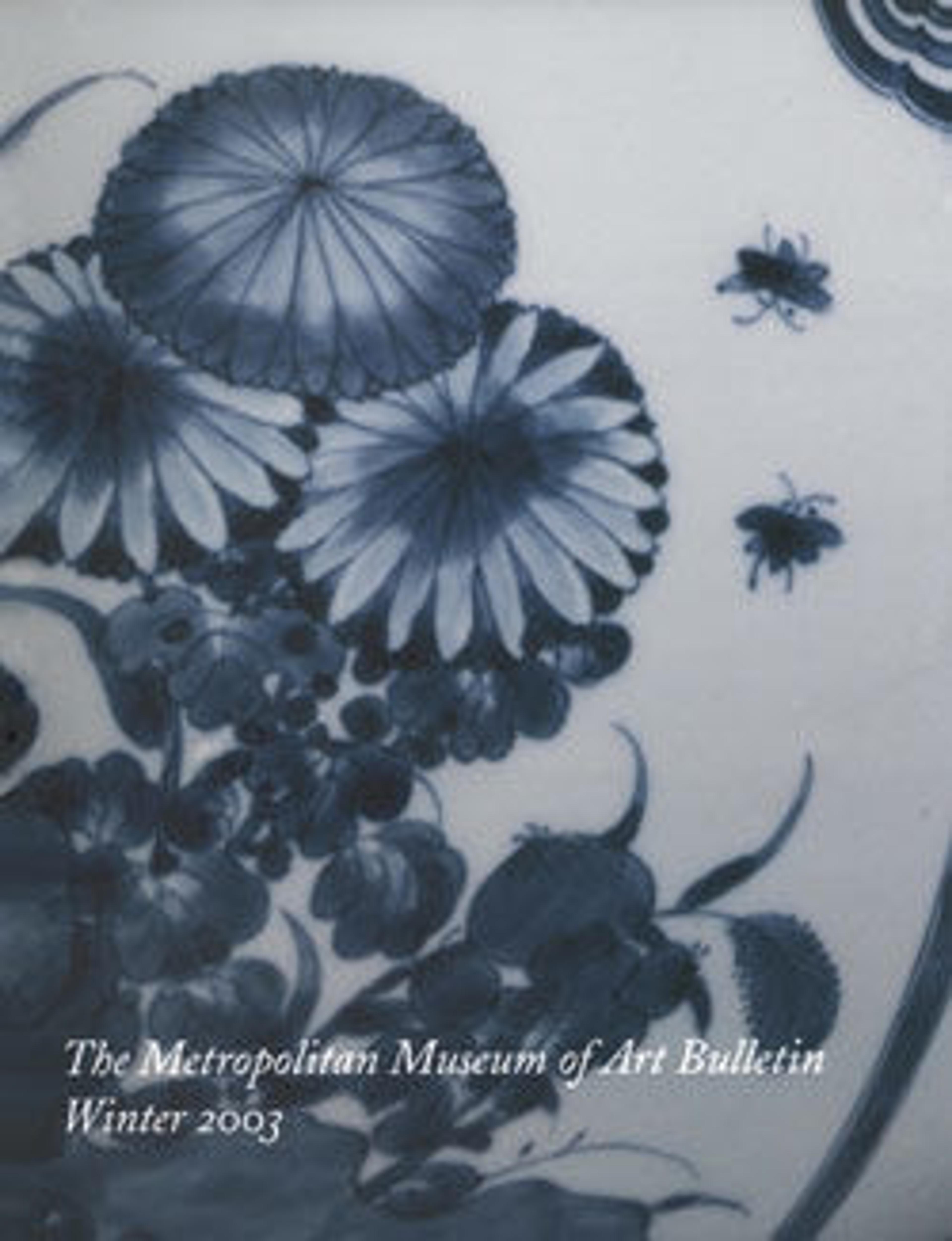Bottle
No better evidence of familiarity with European glass in China need be sought beyond Emperor K’ang His’s own statement that during his reign "we learned in a short time to make glassware that is superior to that made in the West." This bottle, Eastern in shape but Venetian in decorative style, must ow itse existence to this familiarity. It is a remarkable translation into the porcelain medium of the sixteenth-century vetro a fili technique: the incorporation into a clear glass matrix of blown rods—usually white, but sometimes colored—to produce a pattern of vertical or spiraling stripes.
The bottle is one of only three known models of export porcelain that evoke glass techniques, but it would not have been copied directly from an Italian example since the shape does not occur until later. Venetian glass was widely imitated in northern Europe in the seventeenth century, and the bottle could have been copied from a Dutch glass adaptation of a Venetian model. It could also, however, derive from a version in Delft faïence.
The bottle is one of only three known models of export porcelain that evoke glass techniques, but it would not have been copied directly from an Italian example since the shape does not occur until later. Venetian glass was widely imitated in northern Europe in the seventeenth century, and the bottle could have been copied from a Dutch glass adaptation of a Venetian model. It could also, however, derive from a version in Delft faïence.
Artwork Details
- Title: Bottle
- Date: ca. 1715–25
- Culture: Chinese, for European market
- Medium: Hard-paste porcelain
- Dimensions: Height: 9 1/2 in. (24.1 cm)
- Classification: Ceramics-Porcelain-Export
- Credit Line: Helena Woolworth McCann Collection, Purchase, Winfield Foundation Gift, 1982
- Object Number: 1982.27
- Curatorial Department: European Sculpture and Decorative Arts
More Artwork
Research Resources
The Met provides unparalleled resources for research and welcomes an international community of students and scholars. The Met's Open Access API is where creators and researchers can connect to the The Met collection. Open Access data and public domain images are available for unrestricted commercial and noncommercial use without permission or fee.
To request images under copyright and other restrictions, please use this Image Request form.
Feedback
We continue to research and examine historical and cultural context for objects in The Met collection. If you have comments or questions about this object record, please complete and submit this form. The Museum looks forward to receiving your comments.
